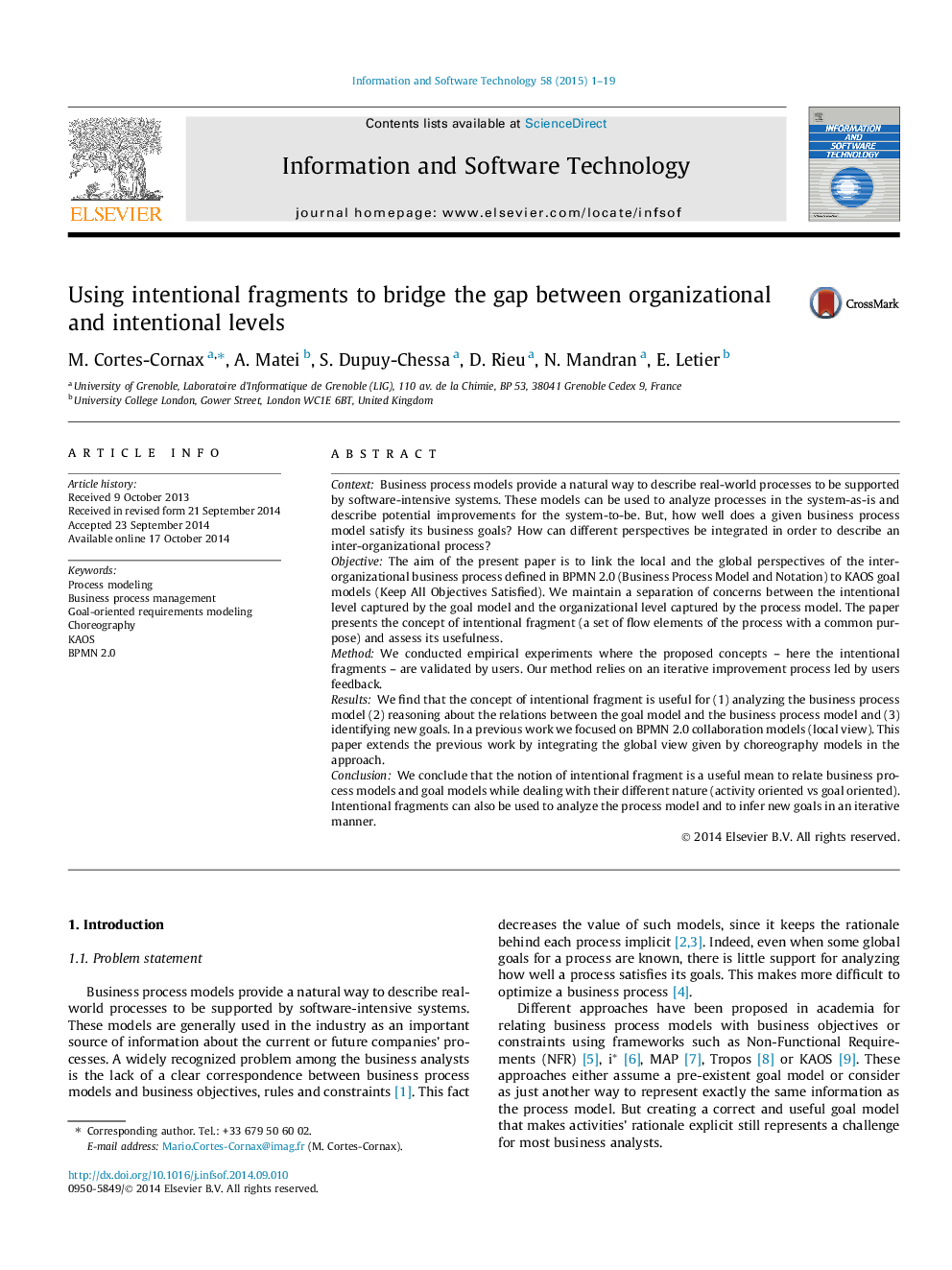| Article ID | Journal | Published Year | Pages | File Type |
|---|---|---|---|---|
| 551028 | Information and Software Technology | 2015 | 19 Pages |
ContextBusiness process models provide a natural way to describe real-world processes to be supported by software-intensive systems. These models can be used to analyze processes in the system-as-is and describe potential improvements for the system-to-be. But, how well does a given business process model satisfy its business goals? How can different perspectives be integrated in order to describe an inter-organizational process?ObjectiveThe aim of the present paper is to link the local and the global perspectives of the inter-organizational business process defined in BPMN 2.0 (Business Process Model and Notation) to KAOS goal models (Keep All Objectives Satisfied). We maintain a separation of concerns between the intentional level captured by the goal model and the organizational level captured by the process model. The paper presents the concept of intentional fragment (a set of flow elements of the process with a common purpose) and assess its usefulness.MethodWe conducted empirical experiments where the proposed concepts – here the intentional fragments – are validated by users. Our method relies on an iterative improvement process led by users feedback.ResultsWe find that the concept of intentional fragment is useful for (1) analyzing the business process model (2) reasoning about the relations between the goal model and the business process model and (3) identifying new goals. In a previous work we focused on BPMN 2.0 collaboration models (local view). This paper extends the previous work by integrating the global view given by choreography models in the approach.ConclusionWe conclude that the notion of intentional fragment is a useful mean to relate business process models and goal models while dealing with their different nature (activity oriented vs goal oriented). Intentional fragments can also be used to analyze the process model and to infer new goals in an iterative manner.
